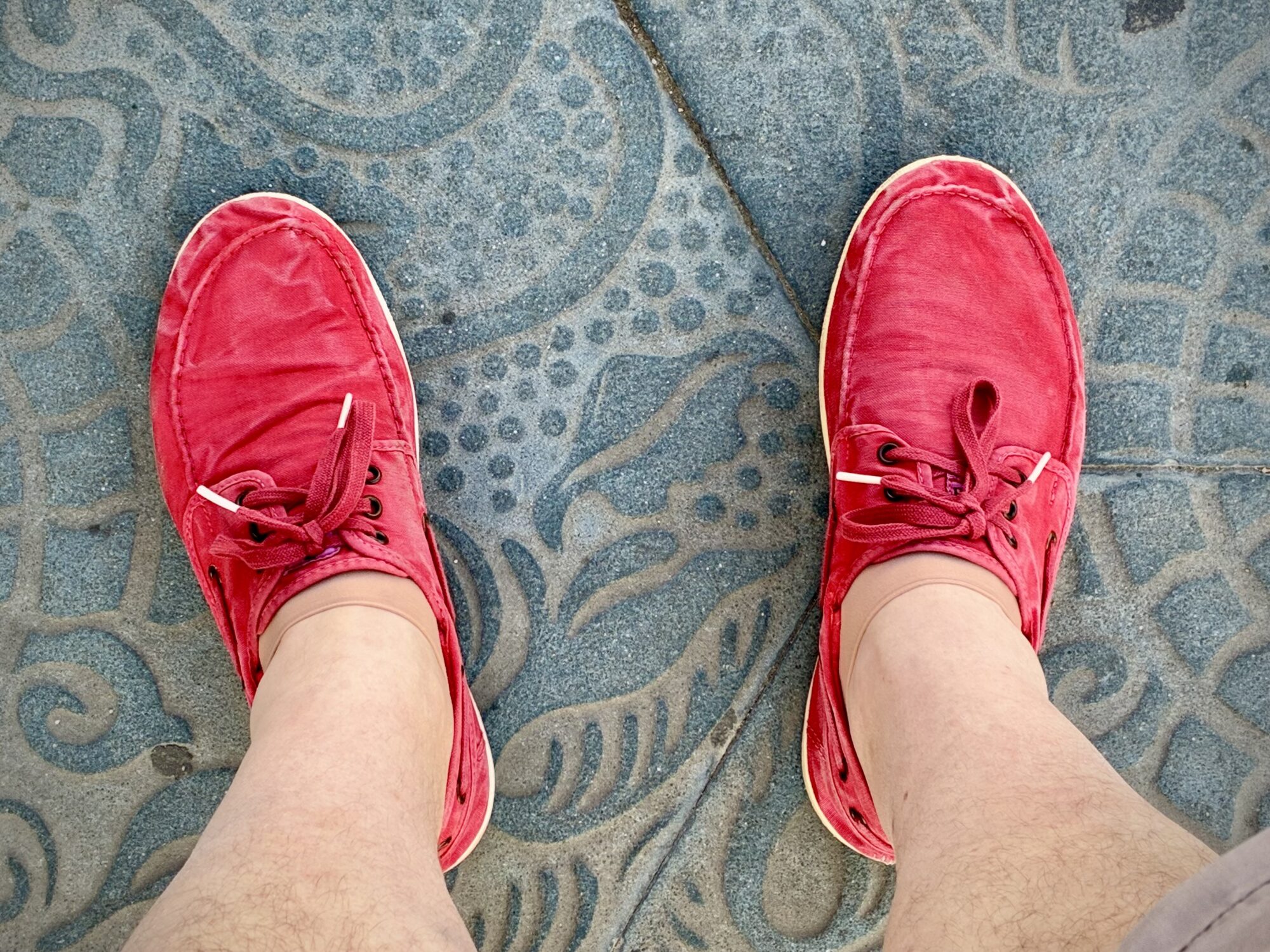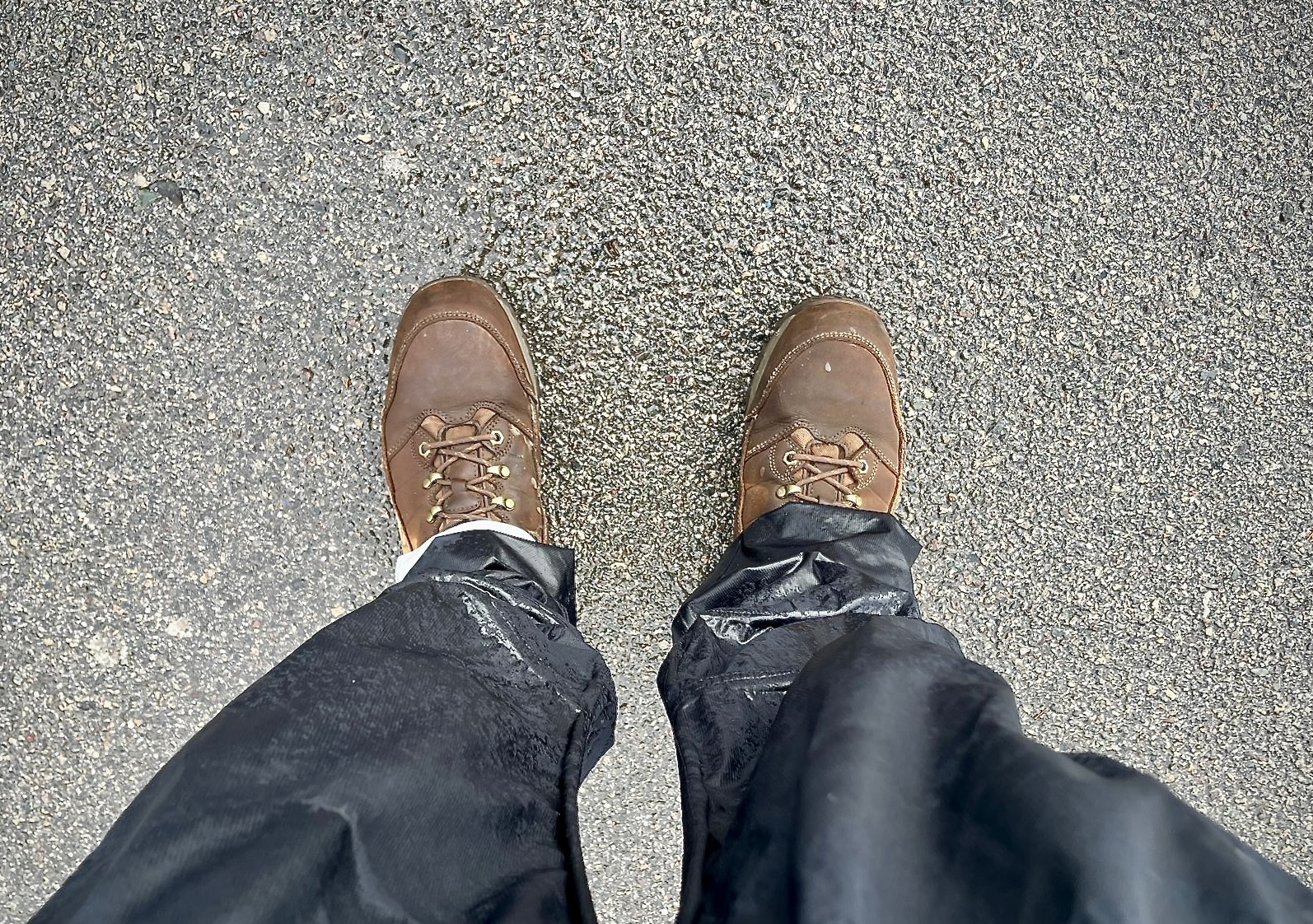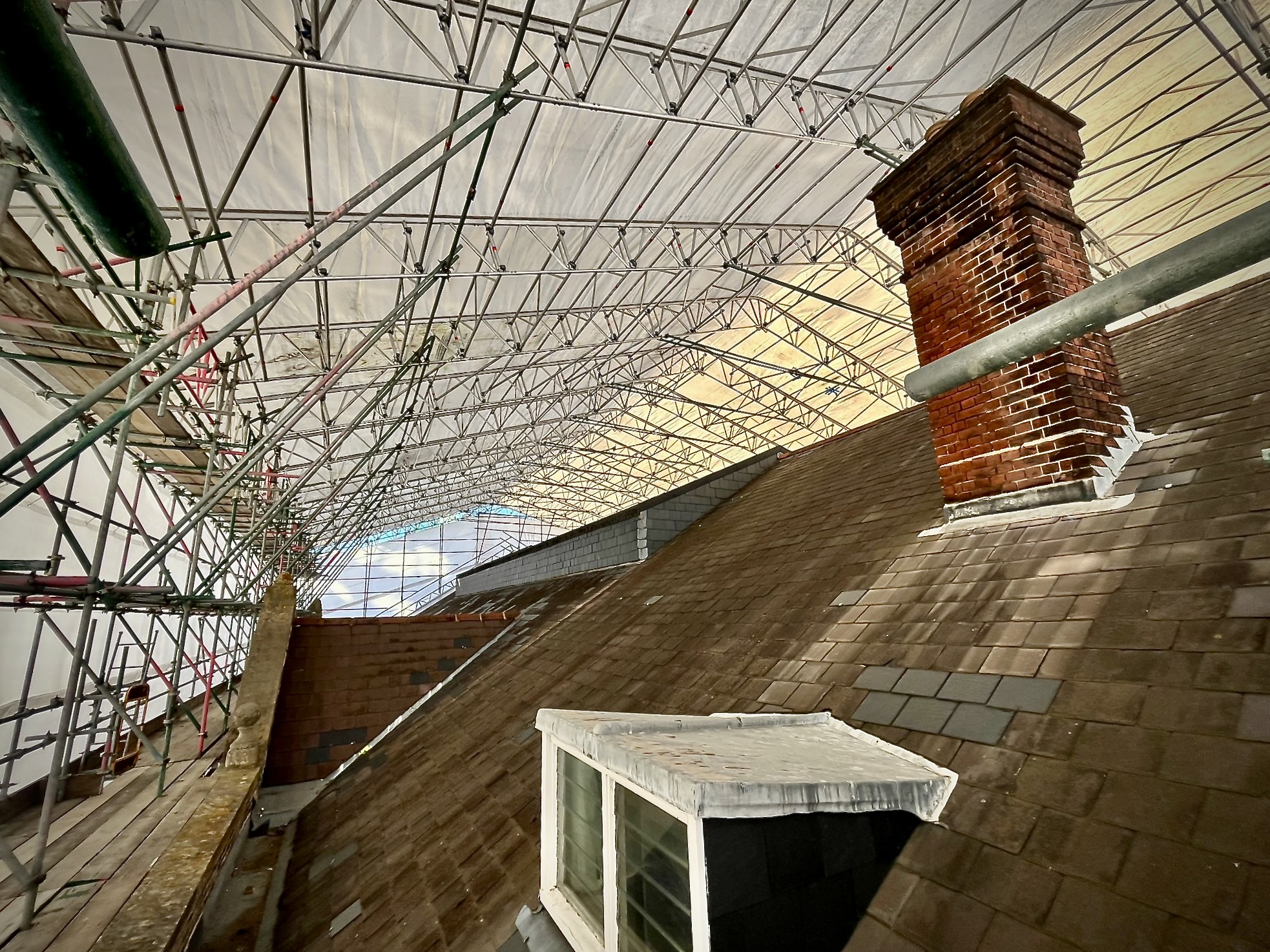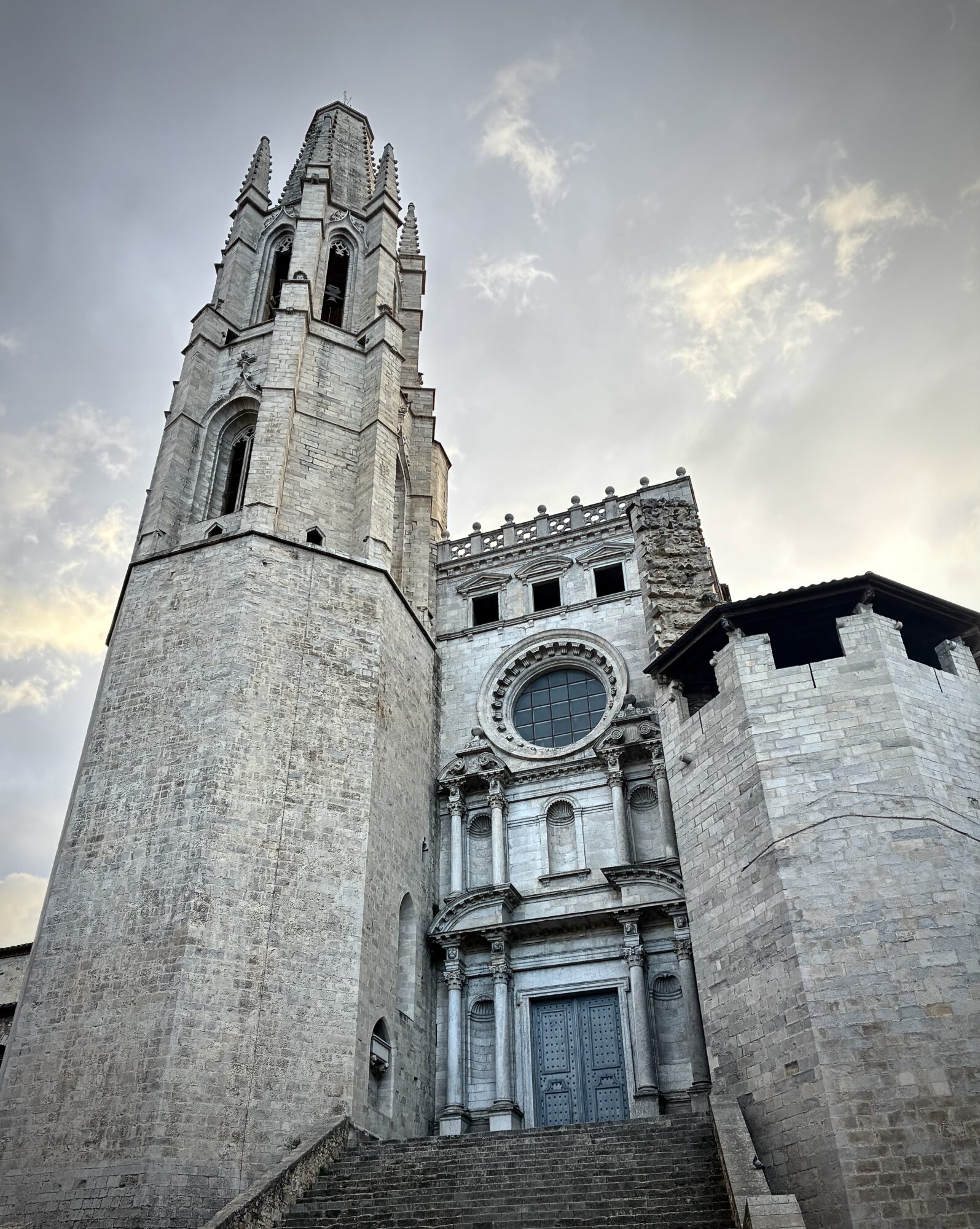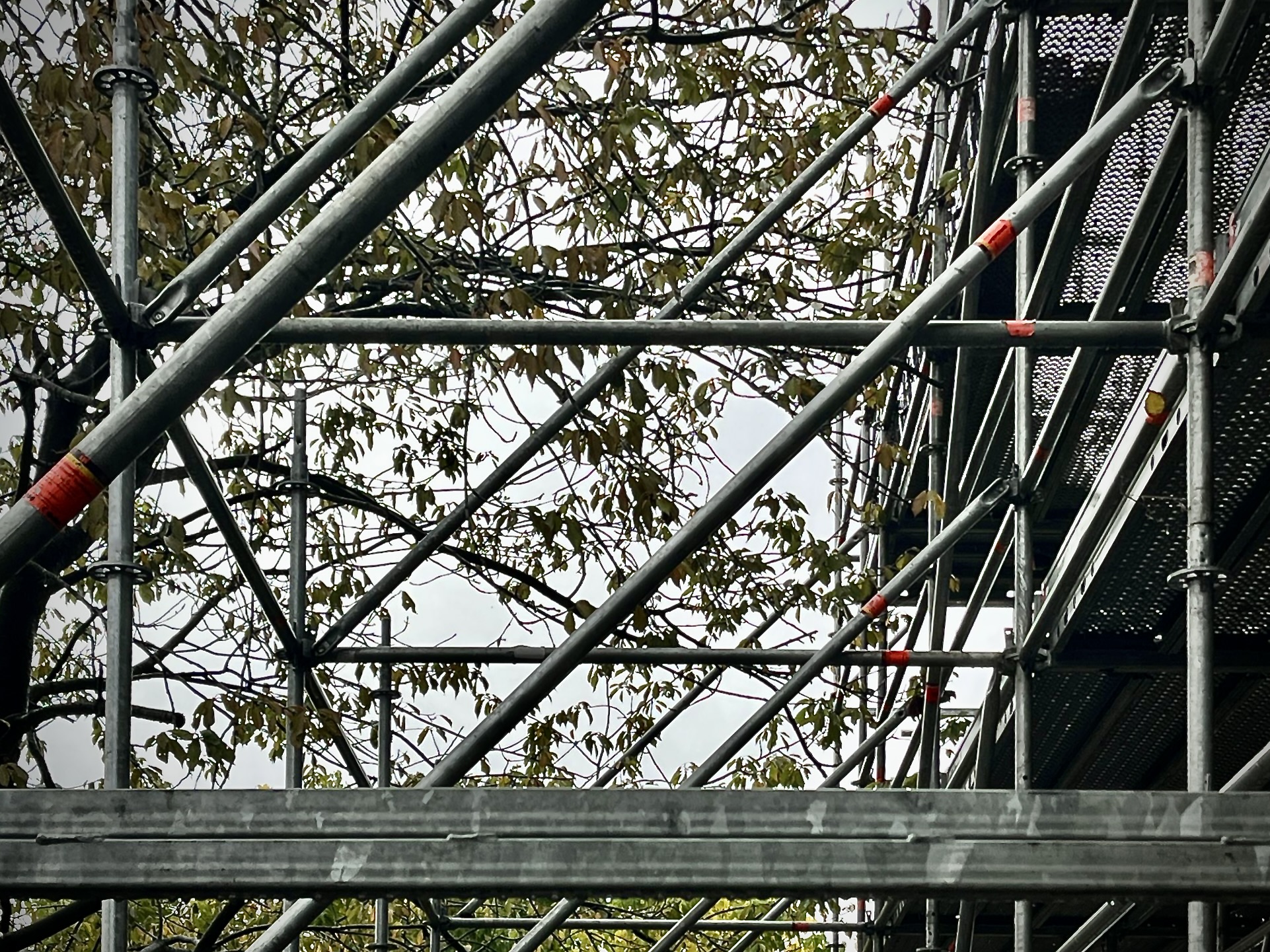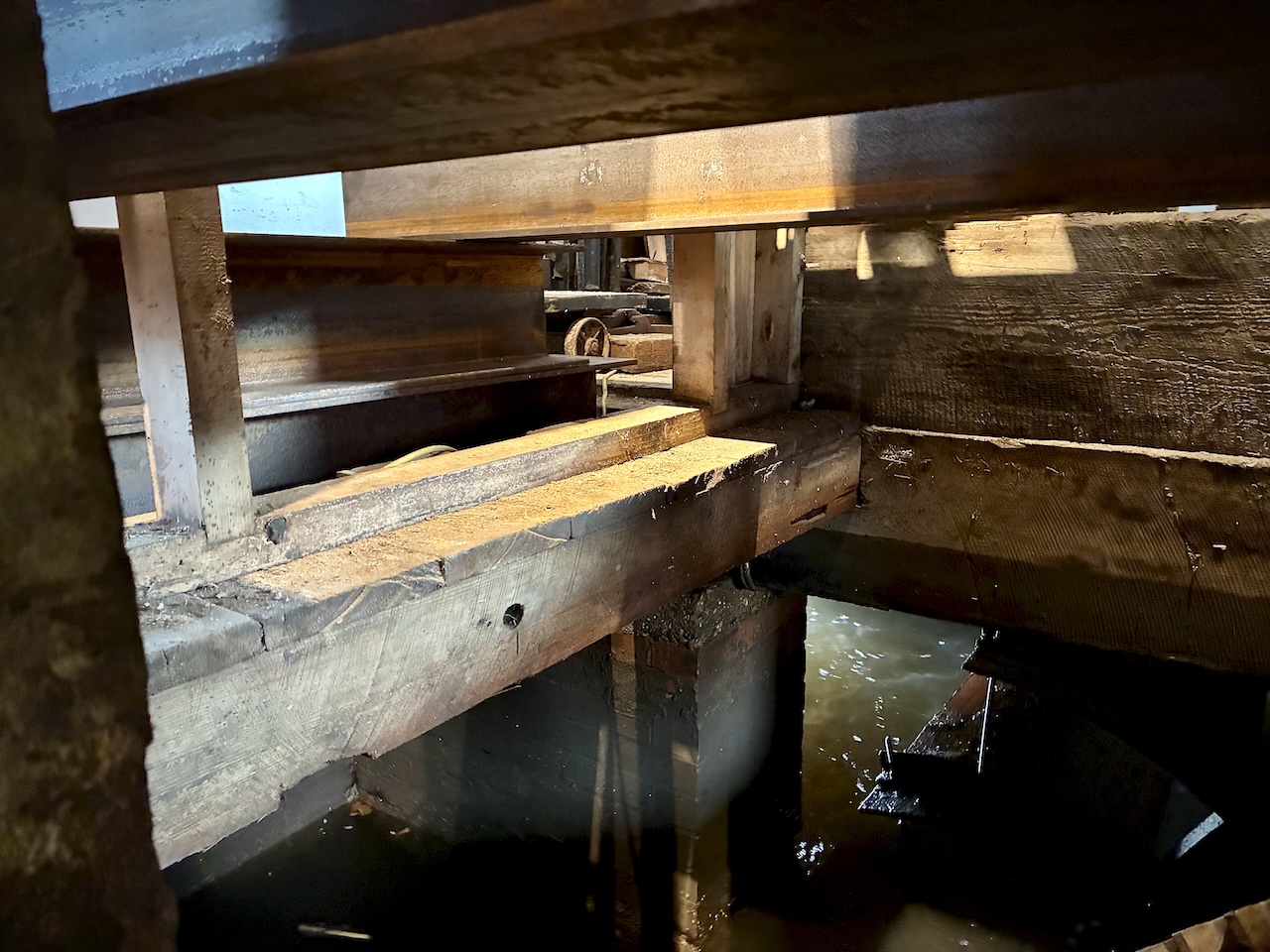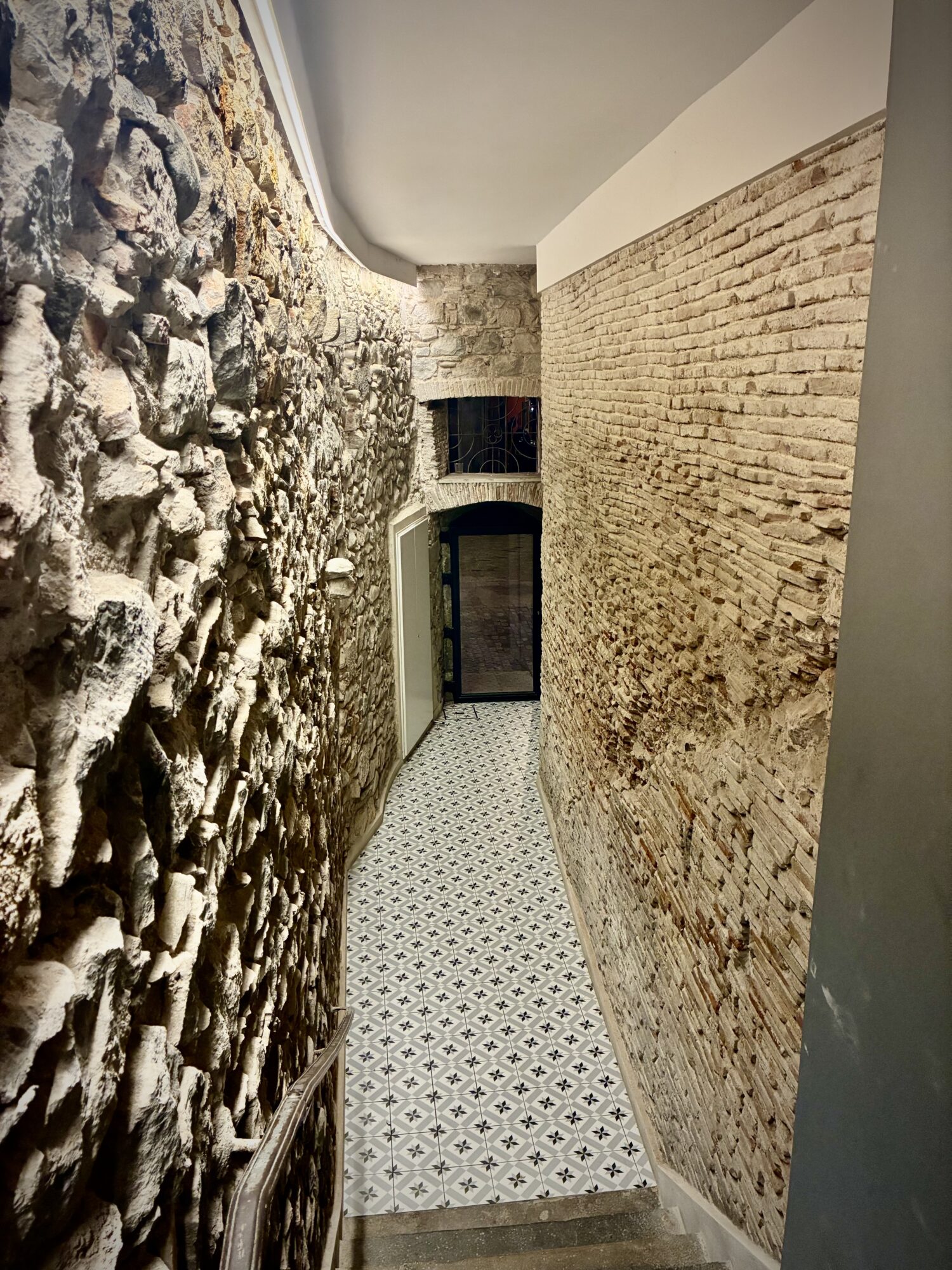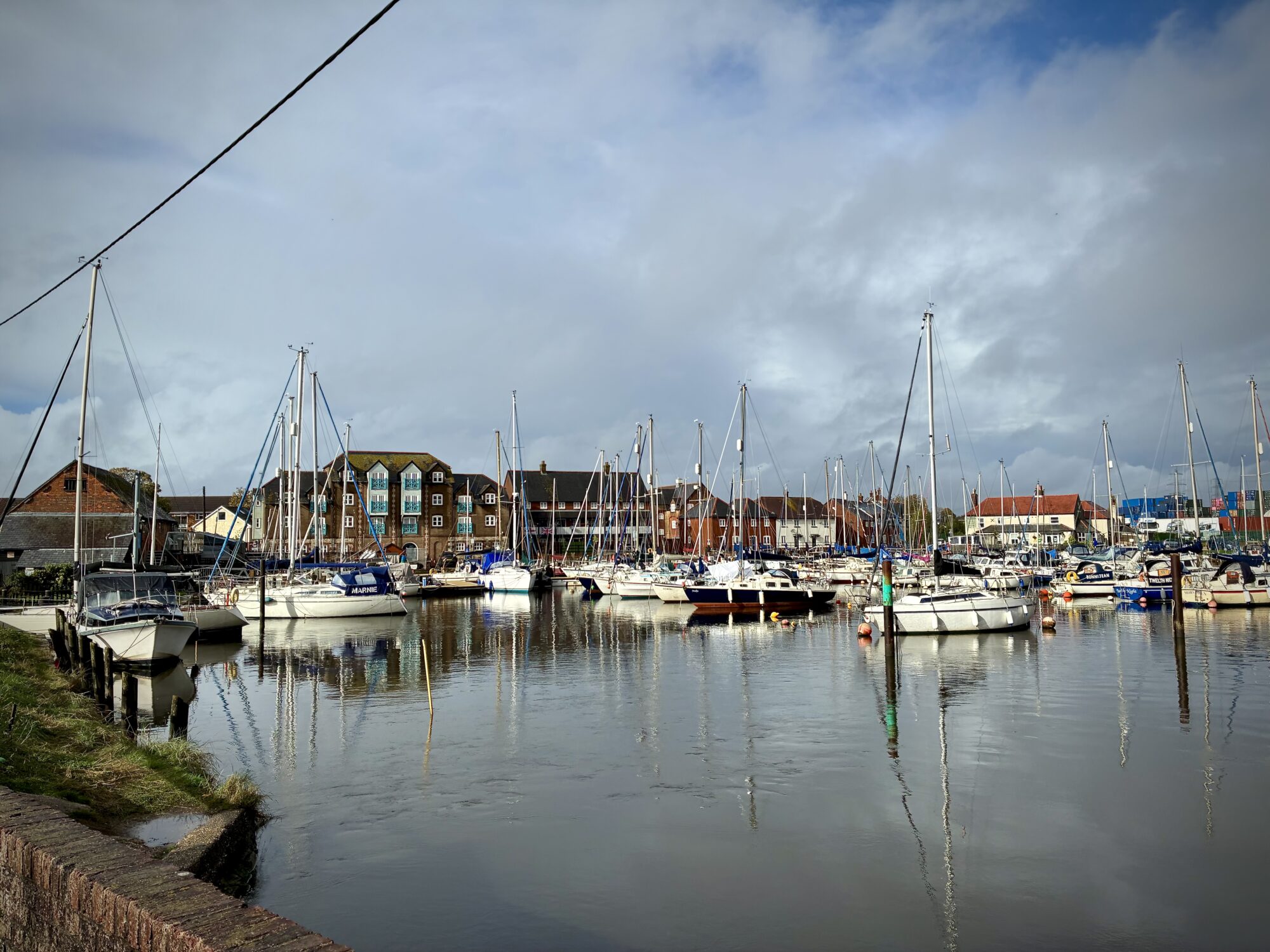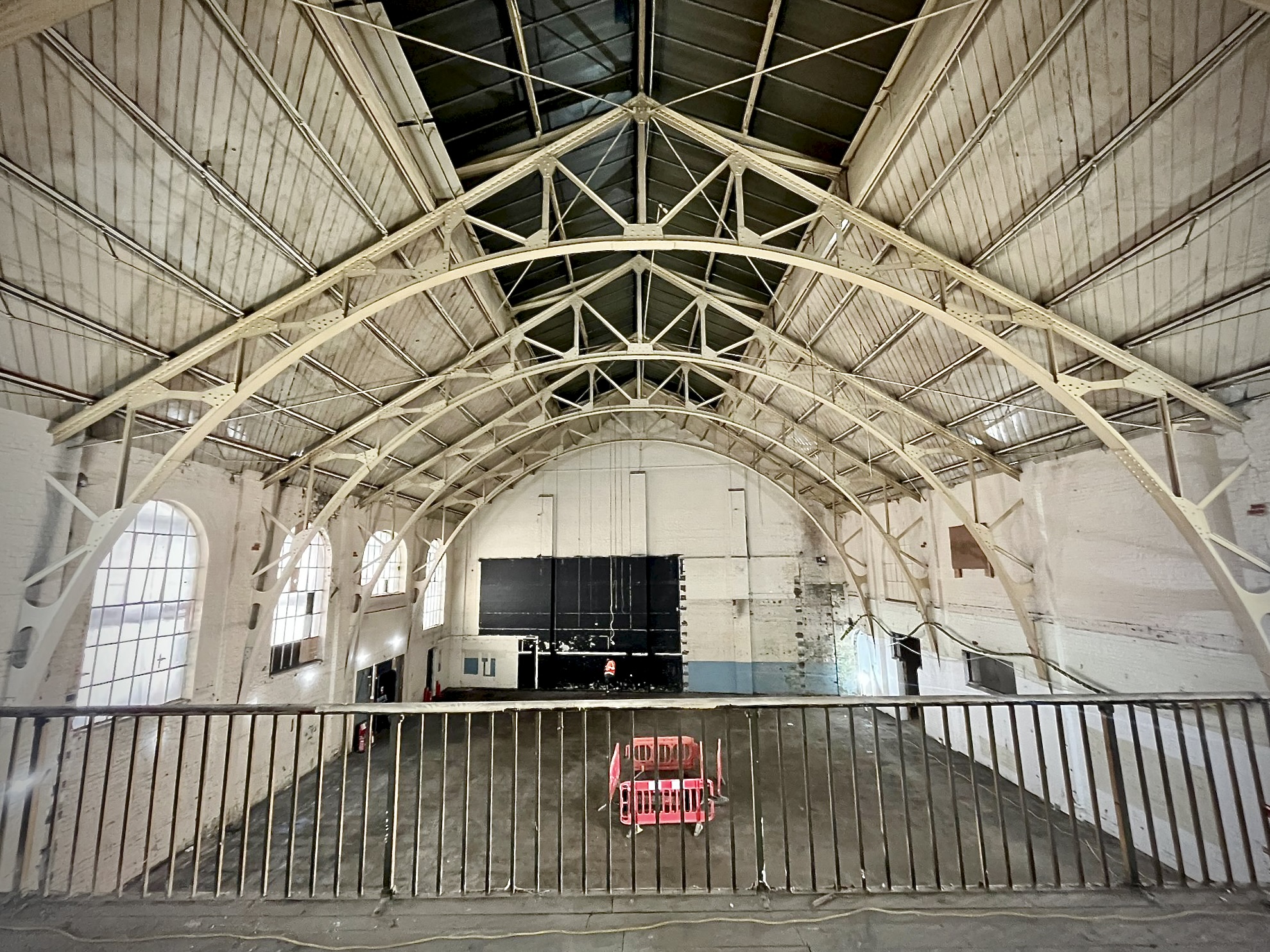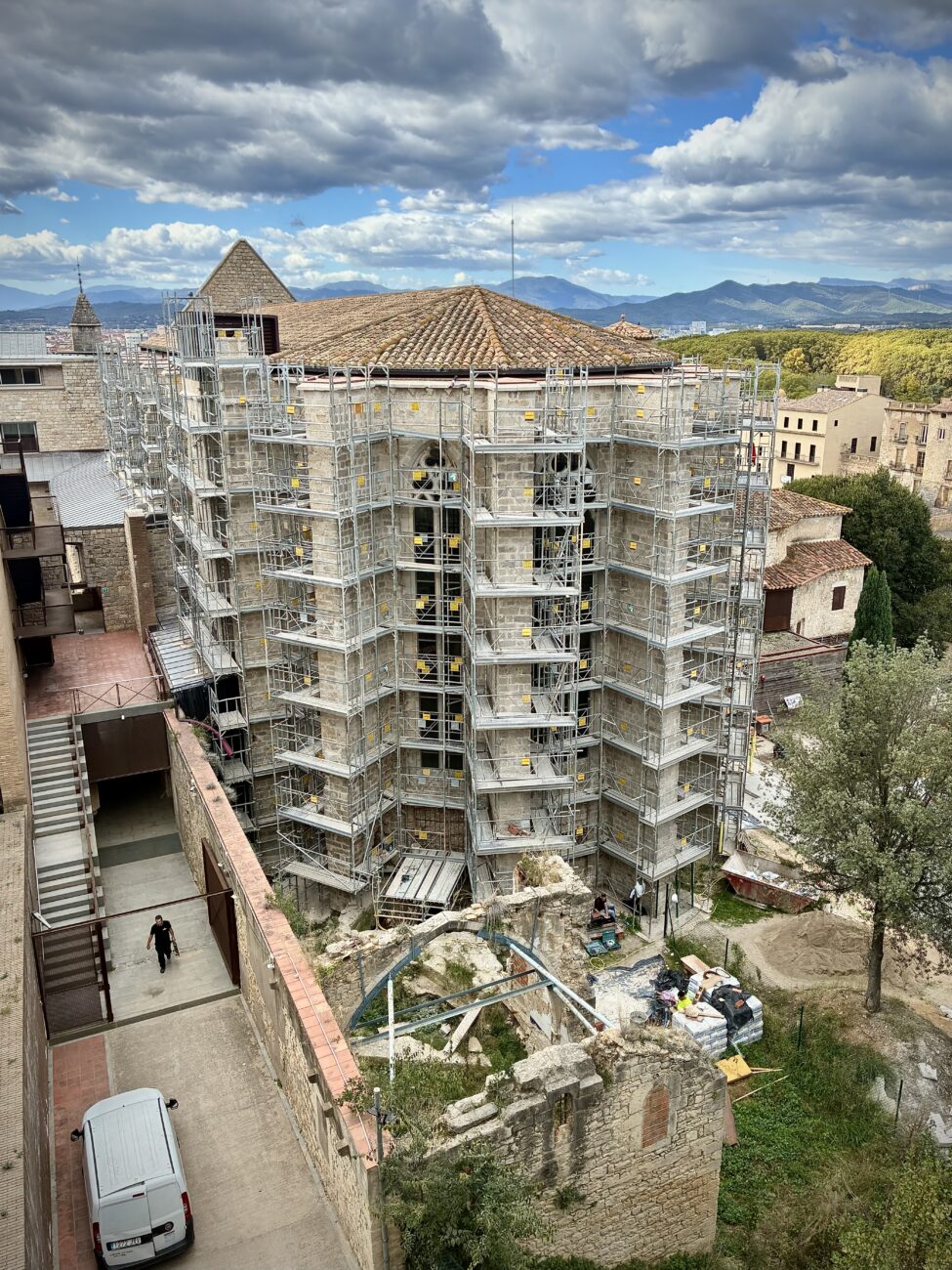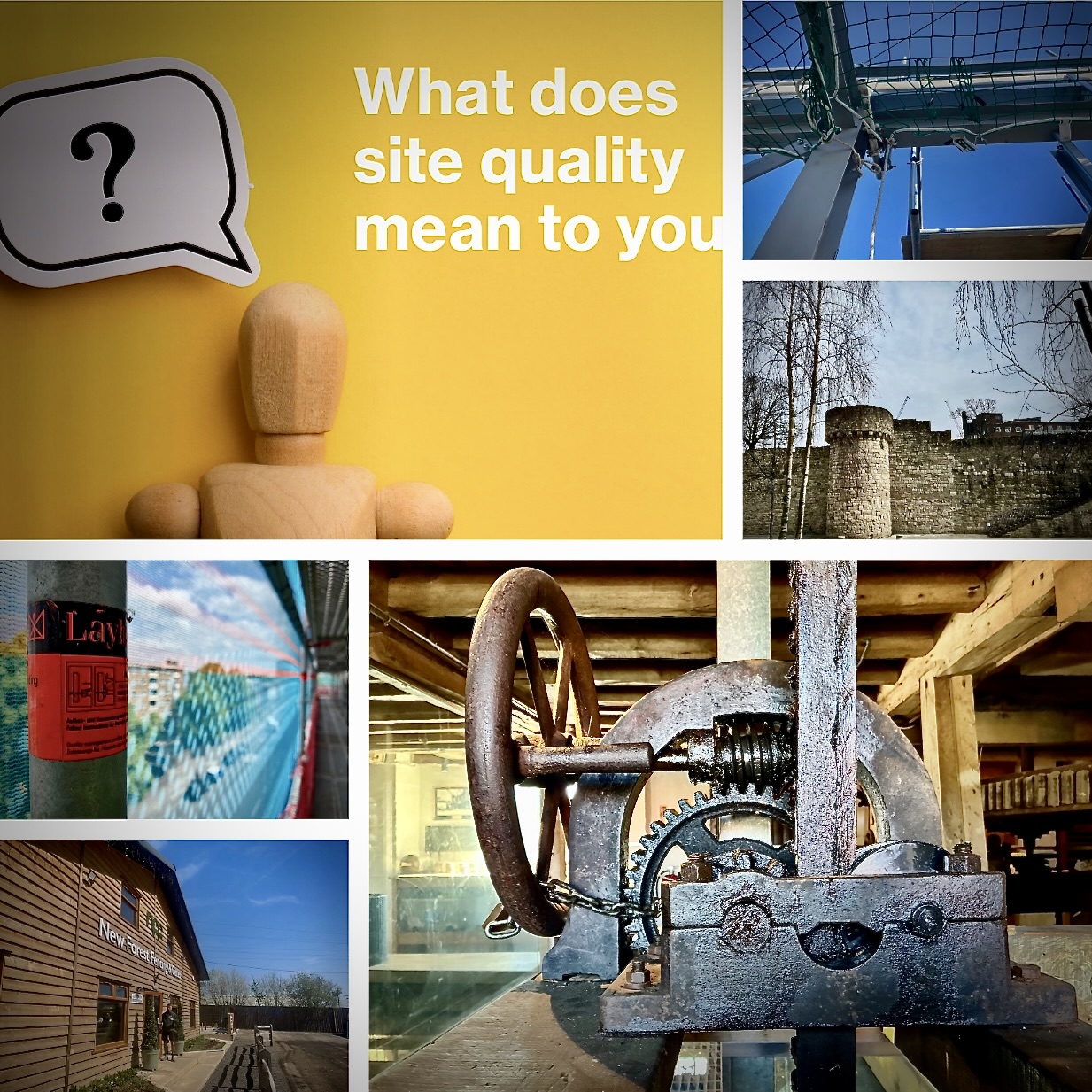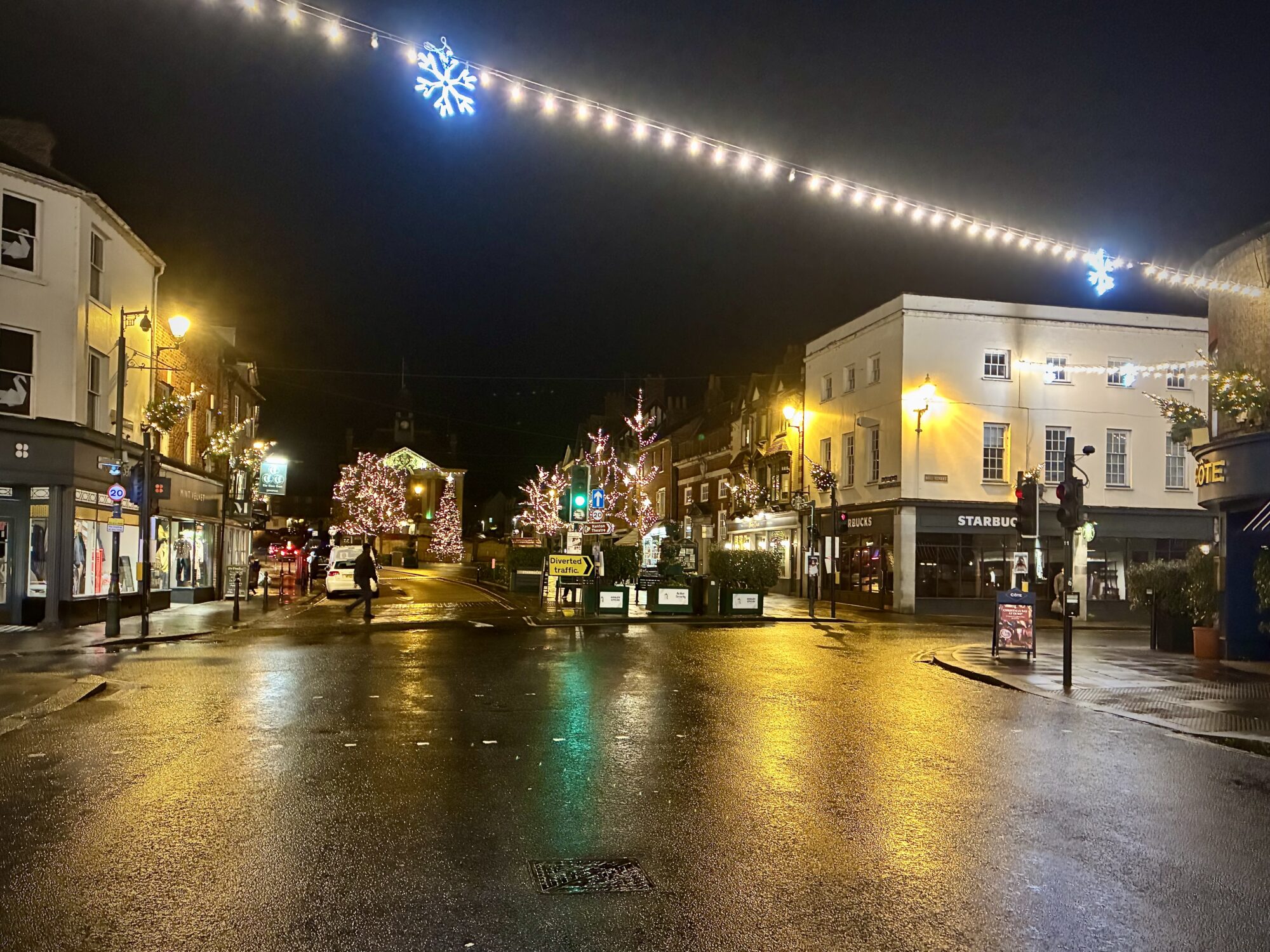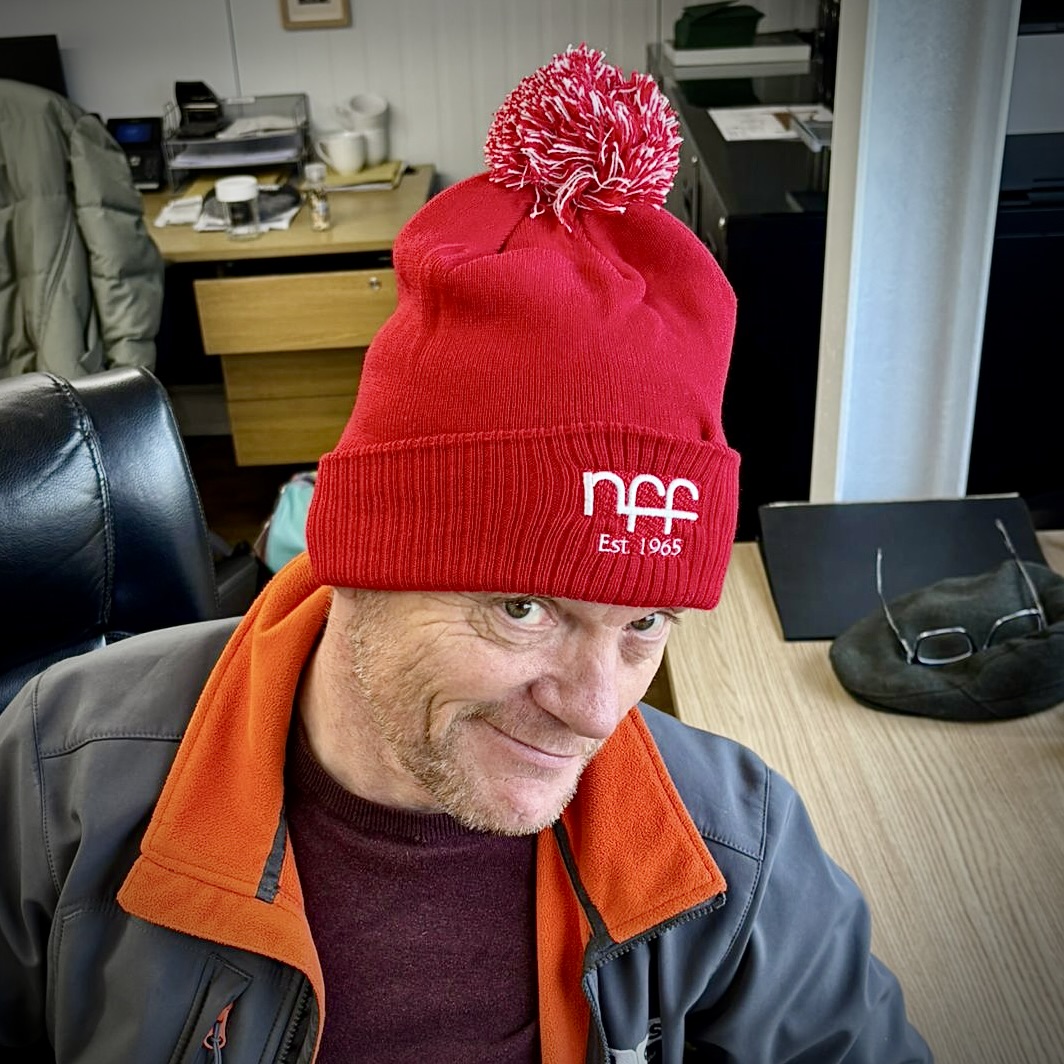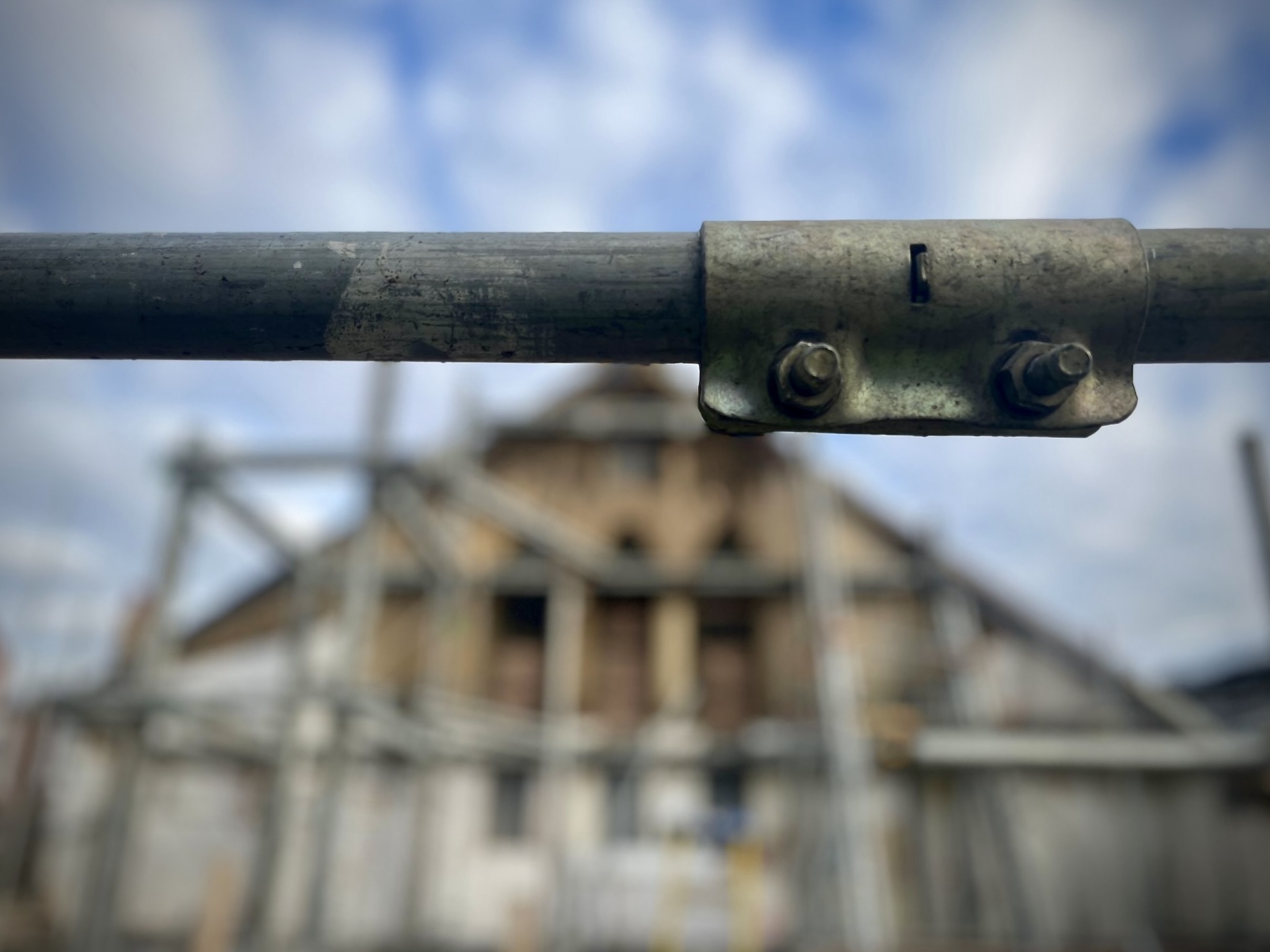This week has felt a little like time travel, both at home and overseas! Not the science‑fiction kind, of course, but a journey through time, craftsmanship, and culture. Our travels have taken us across centuries of engineering ingenuity: from sun‑soaked Catalonia to rain‑soaked Hampshire, history and hard work both leaving their marks underfoot—quite literally.
While my own feet stayed dry in summer shoes among Girona’s cobbled streets, Leon’s were firmly planted in the UK rain—wet boots, waterproof trousers, and all—continuing client inspections with quiet determination. Two worlds apart in weather, yet united by the same commitment to integrity, curiosity, and progress.
Our oldest site this week was the 14th‑century Basilica of Sant Feliu in Girona, whose origins trace back to the 1st century. Builders of that time faced many of the same challenges we know today. The Basilica was designed to have two towers, though only one was ever completed, an early example of what we might now call “value engineering,” even if history might have called it something else.
Our temporary home, a repurposed multi‑storey stone building, embodied architectural evolution. The exposed stone and early concrete staircases met the cut‑off timber and slender cast beams of later centuries, layered again by today’s modern interventions: exposed steel, structural decking and MF partitions. But the compliance consultant’s instinct never sleeps, it was easy to imagine how UK fire safety standards might have something to say about exposed beams, deck protection and void closures meeting ancient stonework.
Back in the UK, Leon’s part of the week brought another string of historic visits: a 15th‑century manor, an 18th‑century tide mill first noted in the Domesday Book, an early‑19th‑century London townhouse now a hotel, and a 19th‑century drill hall in Portsmouth. Each location echoes the ingenuity and pressures of its time, revealing enduring lessons on design, materials, and societal need. What might their builders have thought of our own compliance complexities, and what would we learn from theirs?
Meanwhile, our LCS team has kept momentum on multiple fronts: refining our BSA course presentation after a productive multi‑disciplinary workshop, chairing the quarterly client review to evaluate performance and plan improvements, and guiding supervisors through SSSTS training hosted by MS Associates. A full and fulfilling week across all fronts.
Plan–Do–Check–Act Summary
-
Plan: Continue developing interactive BSA and compliance training materials, informed by site and heritage insights.
-
Do: Deliver workshops, audits, and presentations that merge technical compliance with cultural and historical learning.
-
Check: Measure progress through client feedback, training outcomes, and on‑site assessments.
-
Act: Adapt processes and course content for continuous improvement, aligning best practice with evolving project experiences.
Two different climates, one shared purpose, bridging history, modern safety, and collaborative growth. A true testament to the balance between reflection and progression.
